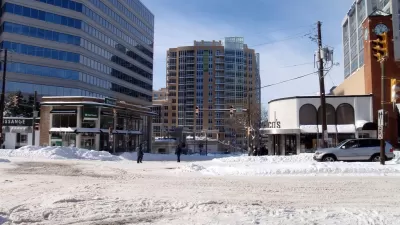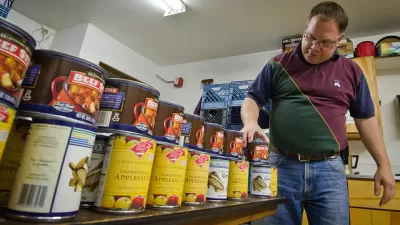Small and large cities throughout the United States are outgrowing their suburban counterparts for the first time in years. An even bigger surprise: small cities seem to be outpacing suburbs and large metros alike according to new analysis.
“When people talk about how cities are making a comeback, they often have this image of the big metropolises,” says Geoffrey Anderson, President and CEO of Smart Growth America, adding, “They might think it’s only happening in places like Washington D.C. But that’s just not true. It’s happening everywhere.” New analysis of U.S. Census data shows that small cities are growing just as quickly, if not faster, than larger cities. This is based on recent findings by Smart Growth America that builds on research published earlier this year by the Brookings Institution, which looked at population growth in large metropolitan areas.
Looking at changes from 2010 to 2011 in 171 smaller metropolitan areas, Smart Growth America calculates that small cities are seeing more growth than suburbs and big cities alike, concluding that “86.5% of small metro areas saw an increase in the number of people living in the city” and that the population in “small metro areas grew... by 0.89%” whereas population in “their suburban counterparts grew by 0.67%.” Moreover, “55.0% of cities in small metro areas grew at a faster rate than their suburban counterparts while “51.0% of cities in large metros added population at a greater rate than their suburbs.” Though these changes do not seem significant “they can have a big impact on a small city or town," posits Smart Growth America.
“Small metro areas’ cities are doing just as well, if not better than, big cities,” says Anderson. “The trend in terms of population growth is toward city living, and that’s happening at a greater rate in our smaller metro areas and the middle of the country.” According to Anderson, these trends are also the result of investments by small cities and are likely “to continue in coming years.” Clarksville, Tennessee and Lincoln, Nebraska are examples of cities that have invested in historic cores and complete streets policies, respectively, and as a result, made it onto the list of the top ten small cities that are growing at a faster rate than their suburbs.
FULL STORY: Where is America growing? The answer may surprise you.

Alabama: Trump Terminates Settlements for Black Communities Harmed By Raw Sewage
Trump deemed the landmark civil rights agreement “illegal DEI and environmental justice policy.”

Study: Maui’s Plan to Convert Vacation Rentals to Long-Term Housing Could Cause Nearly $1 Billion Economic Loss
The plan would reduce visitor accommodation by 25% resulting in 1,900 jobs lost.

Planetizen Federal Action Tracker
A weekly monitor of how Trump’s orders and actions are impacting planners and planning in America.

Waymo Gets Permission to Map SF’s Market Street
If allowed to operate on the traffic-restricted street, Waymo’s autonomous taxis would have a leg up over ride-hailing competitors — and counter the city’s efforts to grow bike and pedestrian on the thoroughfare.

Parklet Symposium Highlights the Success of Shared Spaces
Parklets got a boost during the Covid-19 pandemic, when the concept was translated to outdoor dining programs that offered restaurants a lifeline during the shutdown.

Federal Homelessness Agency Places Entire Staff on Leave
The U.S. Interagency Council on Homelessness is the only federal agency dedicated to preventing and ending homelessness.
Urban Design for Planners 1: Software Tools
This six-course series explores essential urban design concepts using open source software and equips planners with the tools they need to participate fully in the urban design process.
Planning for Universal Design
Learn the tools for implementing Universal Design in planning regulations.
Caltrans
Smith Gee Studio
Institute for Housing and Urban Development Studies (IHS)
City of Grandview
Harvard GSD Executive Education
Toledo-Lucas County Plan Commissions
Salt Lake City
NYU Wagner Graduate School of Public Service





























